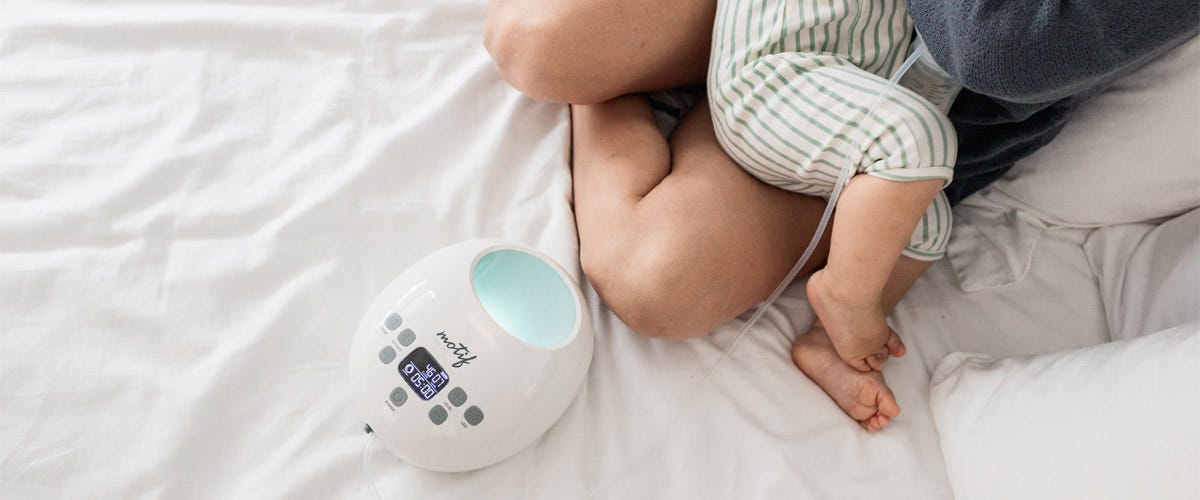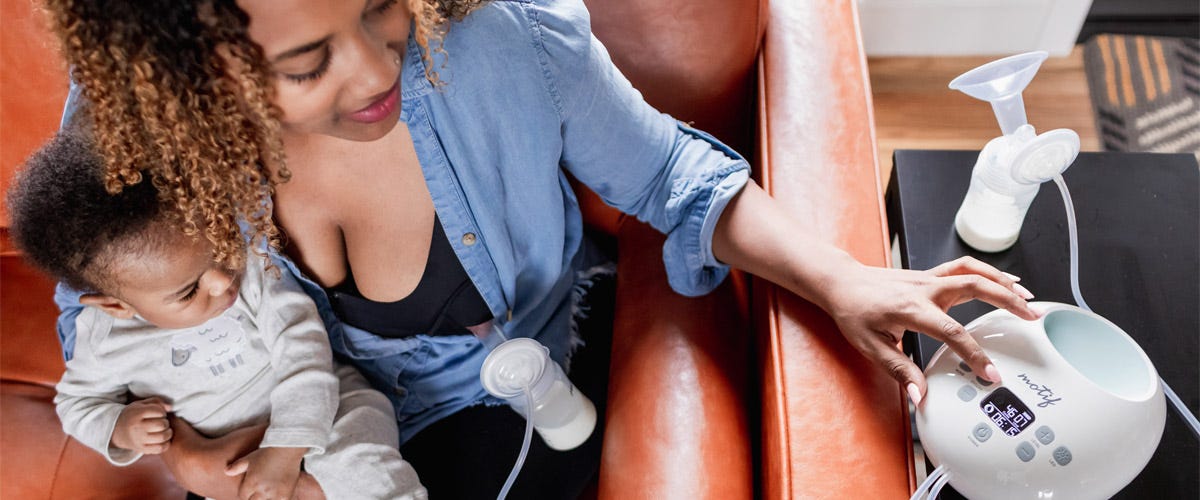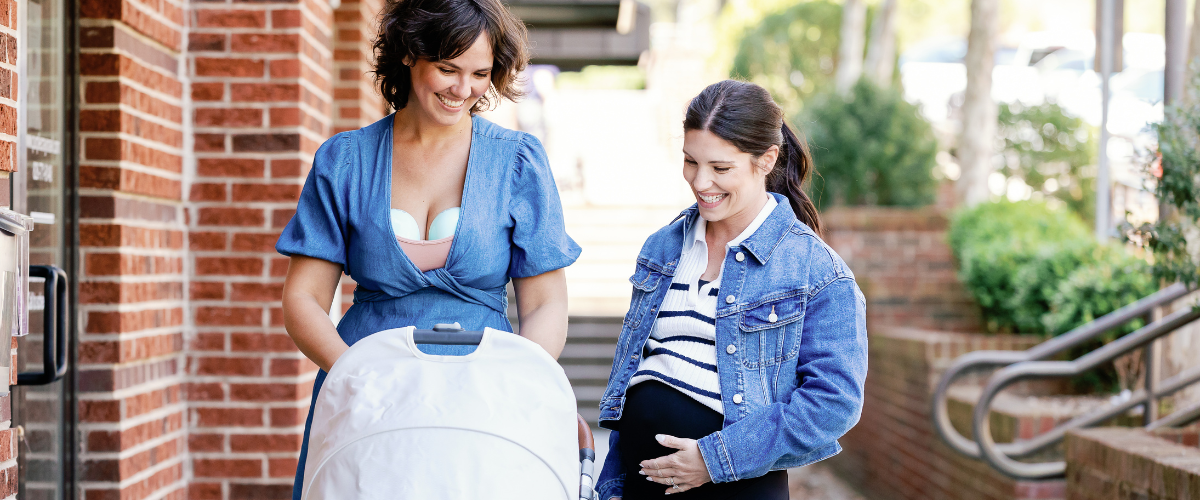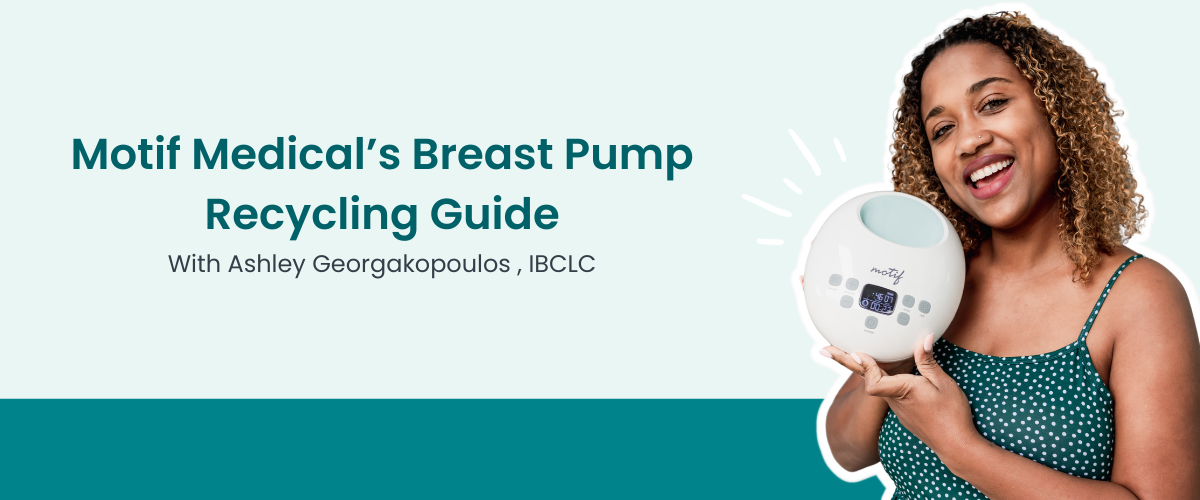Breast milk is known for its antibodies, nutrient density, and numerous health benefits. We also frequently discuss the benefits of breastfeeding, juggling lifestyle, troubleshooting occasional problems, and learning the ins-and-outs of pumping! Just when you think you've learned all about breastfeeding and the amazing qualities of breast milk, we have a few bonus breastfeeding facts that you may not have heard of, thought of, or fully realized!
5 Interesting Facts about Breast milk
1. Your breasts may leak milk when you hear a baby cry
Surprising new moms everywhere, breasts may leak milk when you hear a baby cry, even have a letdown response. That's right, and not just your own baby! Since the breast milk-making and feeding response is predominately a hormonally- and emotionally-charged phenomenon, oxytocin is flowing, and so is your milk, when the body senses distress in a baby. If ever you hear the term, "breast milk fixes everything," you'll notice that your body takes that notion very literally, wanting to feed and calm all the babies. It's nature's way to increase survival rates and bond. You may also feel a surge of emotions when this happens, too. Grab those breast pads when you leave the house, you may need them!
2. Nipples squirt milk out of several holes, not just one
Think of your nipples like a shower head. This is an especially helpful tip when hand expressing breast milk, as it can be a messy experience. A wide-mouth bowl or the flange from your breast pump can help to collect the milk. Breastfeeding mothers may also notice that, occasionally, a milk clot may form on one of the holes. If left unaddressed, it may form a "bleb" which is can get inflamed and uncomfortable. Avoid rubbing and picking, but rather keep it moisturized with your milk, soak in warm water, and if still not resolved, use a sterilized needle to gently release the bleb.
Babies who are correctly latched onto the breast will have their mouths covering the entire areola, not just the tip of the nipple, so they can drink the milk from these multiple holes without a problem. A correct latch will also help prevent clogs in the breast and nipples. If unsure about the latch or are experiencing issues, contact an International Board Certified Lactation Consultant (IBCLC).
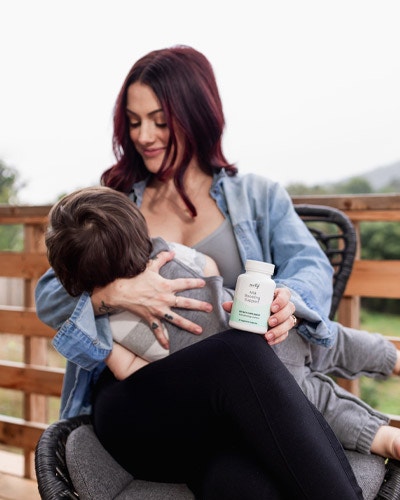

3. Breastfeeding Causes Uterine Cramping
While uncomfortable, and at times quite painful the first days postpartum, the act of breastfeeding will simultaneously contract the uterus. This serves a number of purposes. Oxytocin surges act to cause this contraction, just like when given Pitocin (artificial oxytocin) to induce labor. It helps the body ensure that the placenta fully leaves the body. The placenta comes out much quicker when the baby is immediately able to latch and nurse right out of the womb for the first hour. This exit signals the transition of milk to start, going from colostrum to mature milk, which typically takes 3-5 days.
Another major benefit to this cramping is to slow bleeding and shrink the uterus back to its tiny form. It has grown enormously by comparison to make room and encompass the growing baby. This may take several weeks, but it's quickened with breastfeeding or pumping.
4. Breast Milk Changes - Constantly
The first major changes happen the first 3-5 days of life. Colostrum, aka liquid gold, is the first milk, made by the 2nd trimester so as to be available for whenever the baby is born. Once the placenta exits, the colostrum will start to change from its condensed, concentrated form, the mature milk we visualize when we think of milk. Mothers who pump their breastmilk immediately postpartum will see this change take place.
New mothers and those new to trying to breastfeed need to be made aware that the breast fullness with milk does not happen immediately, and not feel the need to supplement with formula because they fear they do not have enough milk.
While the primary composition of breast milk is stable, it does change with the growing baby. Breast milk-making tissue knows what the baby needs from the frequency and amount of milk requested, the saliva, which has enzymes and germs that signal the mother's body accordingly. Breast milk makes subtle changes to calories per volume, nutrients and immune system assistance for the baby, making relevant antibodies in real time, typically within 6 minutes, as the mother's body senses how to acclimate to protect the baby from disease. The World Health Organization (WHO) recommends offering exclusively breast milk the first 6 months of age, primarily for the first year as their main source of calories, and as able for the first 2 years of age, for this reason. It takes 2 years for the immune system to finish developing, and breastfed babies get a major head start!
5. Breastfeeding and Pumping Breast Milk Burns Calories
This may be a fact you already knew, but do you know how much? On average, an exclusively breastfeeding woman will burn 300 calories a day. This is also true for those pumping full-time or part-time in between direct feedings. To put in perspective, that is equivalent to 60 minutes of moderate exercise. Now, there will be some fluctuations in this average based on an individual's metabolic rate, but you get the picture! This is a major reason why breastfeeding can help lower risks of heart disease, high blood pressure, type 2 diabetes, and a dramatic decrease in risk of breast cancer and ovarian cancer. These cancers are directly related to estrogen receptors and fat cells, and accumulative years of breastfeeding have been proven to effectively reduce, if not eliminate, these risks completely.

